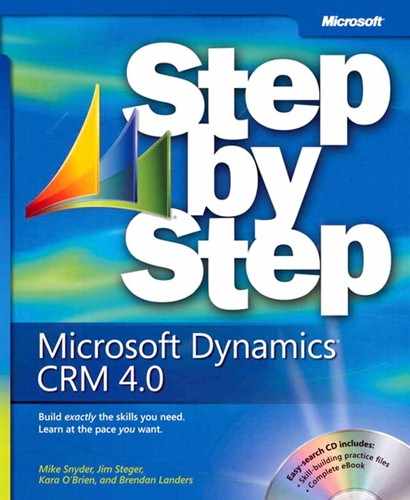After Microsoft Dynamics CRM for Outlook completes its initial synchronization process with your Outlook file, special rules apply to how the synchronization process handles deleted records. For example, deleting a contact record in Outlook does not delete that contact record in Microsoft Dynamics CRM. Conversely, deleting a contact in Microsoft Dynamics CRM removes the synchronized contact from Outlook for all users except for the Outlook user who owns the record in Microsoft Dynamics CRM.
With respect to deleted records, Microsoft Dynamics CRM for Outlook follows rules and conditions to determine how the synchronization process should update Outlook and Microsoft Dynamics CRM. Microsoft Dynamics CRM for Outlook processes deleted records as outlined in the following table.
Record type | Action | Record state | Result |
|---|---|---|---|
Contact | Delete in Microsoft Dynamics CRM | Any | Deleted from Outlook for all users except contact owner. Remains in contact owner’s Outlook file. |
Contact | Delete in Outlook | Any | No change in Microsoft Dynamics CRM. |
Task | Delete in Microsoft Dynamics CRM | Pending (not completed in Outlook) | Deleted from Outlook. |
Task | Delete in Microsoft Dynamics CRM | Past (completed in Outlook) | Remains in Outlook. |
Task | Delete in Outlook | Pending (open in Microsoft Dynamics CRM) | Deleted from Microsoft Dynamics CRM. |
Task | Delete in Outlook | Past (completed or canceled in Microsoft Dynamics CRM) | No change in Microsoft Dynamics CRM. |
Appointment | Delete in Microsoft Dynamics CRM | Pending (open in Microsoft Dynamics CRM) | Deleted from Outlook if appointment start time is in the future. |
Appointment | Delete in Microsoft Dynamics CRM | Past (completed or canceled in Microsoft Dynamics CRM) | Remains in Outlook. |
Appointment | Delete in Outlook | Pending (open in Microsoft Dynamics CRM) | Deleted from Microsoft Dynamics CRM if deleted by appointment owner or organizer. Not deleted from Microsoft Dynamics CRM if deleted in Outlook by non-owners or non-organizers. |
Appointment | Delete in Outlook | Past (completed or canceled in Microsoft Dynamics CRM) | No change in Microsoft Dynamics CRM. |
If you delete a contact in Outlook (which does not delete the contact from Microsoft Dynamics CRM) and then someone subsequently modifies that contact record in Microsoft Dynamics CRM, Microsoft Dynamics CRM for Outlook recreates that contact in the Outlook file, even though you previously deleted it.
On a related note, deactivating contact records in Microsoft Dynamics CRM does not remove the contacts from Outlook. You must manually delete the deactivated contacts from Microsoft Dynamics CRM if you don’t want them to appear in your Outlook file any longer.
In this exercise, you will delete several records to see how the synchronization process treats each scenario.
Note
USE the Chris Perry amd Jose Curry contact records you created earlier in this chapter.
BE SURE TO start Outlook with Microsoft Dynamics CRM for Outlook installed, if necessary, before beginning this exercise, and confirm that you have permission to delete contact records in Microsoft Dynamics CRM. If you are not sure, contact your system administrator.
In the Outlook menu bar, click the Go menu, and then select Contacts.
In the search box, type Chris Perry to locate the contact record.
Select the Chris Perry record and, in the Outlook menu bar, click the Delete button.
Open Microsoft Dynamics CRM in Internet Explorer, and navigate to the account list. Locate the Sonoma Partners account (or the alternate parent account record, if you assigned a different parent account to the record earlier in this chapter) and double-click it to open it.
Click Contacts in the left navigation pane.
A list of contacts associated with the account appears. Note that even though you deleted the Chris Perry contact from Outlook, Microsoft Dynamics CRM for Outlook did not delete the record on the server.
Click the Jose Curry record, and click the Delete button in the grid toolbar. In the Contact Delete Confirmation dialog box, click the Delete button, and then click OK in the secondary confirmation dialog box.
Close Internet Explorer.
Open Outlook, click CRM in the menu bar, and then click Synchronize with CRM.
In the Contact search box, type Jose Curry. Outlook displays the matching contact record. Double-click the record to open the contact.
Note that Microsoft Dynamics CRM for Outlook did not delete the Jose Curry contact from your Outlook file, because you are listed as the owner of this record. However, this contact record is no longer tracked in Microsoft Dynamics CRM. If you delete a contact record owned by a different user, Microsoft Dynamics CRM for Outlook removes that record from your Outlook file.
